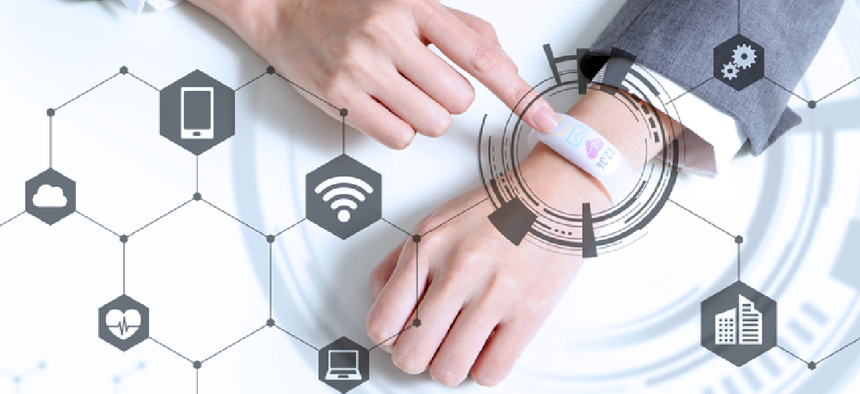Does IoT cause more problems than it solves?


Connecting state and local government leaders
Home users may choose to take on the risk, but should the federal government?
Internet-of-things devices have come a long way since the first one was created in 1990 -- a toaster that could be turned on and off over the internet. Last year was forecast to be the point at which IoT devices would outnumber humans, and more recent research suggests that there will be four devices for every human on earth by 2020. Such rampant growth might at first appear to be a good thing, but is it possible that the increase in IoT devices is causing more harm than good and could threaten federal security?
The allure of convenience
IoT manufacturers focus on making life easier for consumers, including government employees. From smart speakers and personal assistants to light bulbs, coffee makers and children’s toys, innovative manufacturers have capitalized on selling convenience to the connected world. IoT has largely removed purchasing obstacles, eliminating the need to shop at brick-and-mortar-stores. Users don't have to get up from the couch to turn on the air conditioning or wonder whether they remembered to turn off the lights and lock the doors at night.
The catch
To a large extent, IoT manufacturers have been successful in bringing their devices to market, making users happy while also making a profit. The products are affordable and fill a need. This chart shows the number of IoT devices worldwide from 2015 to 2025, and the overall IoT market is projected to be worth more than $1 billion annually for the foreseeable future.
Such remarkable sales indicate two things: high consumer demand and intense competition among manufacturers. This combination too often forces manufacturers to cut corners and rush their products to market ahead of their competitors.
One of the first things cut, as evidenced over the last decade, has been security. Building in security delays time to market, increases costs and reduces profits. Some manufacturers have learned the hard way from a flurry of lawsuits from consumers, resellers and big-name customers, but others have yet to make any improvements.
As a result, there are billions of unsecured personal and business devices being used every day.
The risk to federal agencies
Right now, there are IoT devices in use within most federal agencies -- from wearables to HVAC controls and other sensors. Because the devices often aren’t registered and tracked by the government, they are a large contributor to the growing amount of shadow IT on federal networks. In 2017, the Department of Homeland Security found that federal agencies had an average of 44 percent more devices on their networks than they expected. Not all of that shadow IT can be categorized as IoT, but it certainly accounts for a big portion.
This is a huge problem facing our country. If malicious hackers target a federal employee and gain access to a personally owned IoT device (which usually isn’t very difficult), they have several options. They can scour the data on that device, capturing contact information, credit card numbers and personally identifiable information that can be used to blackmail the victim into meeting the hacker’s demands. They can also harvest and analyze the data and engineer a targeted social campaign to ultimately gain access to the victim's government computer, and ultimately the agency network. Access to one unsecured device gives hackers multiple options -- launching a ransomware attack, crafting phishing emails supported by authentic data collected through the IoT device, or simply gaining access to the federal network and silently observing the actions and routines of thousands of other users on the network, gathering more data and developing a plan for a much more devastating attack.
If all of that is possible through a single unsecured device -- and the 2020 predictions are correct -- imagine the size of the attack surface in just two years. Every person with access to federal networks will be a walking target with four unsecured network entry points.
Secure the devices to mitigate the risk
IoT devices themselves aren’t inherently bad; in fact, many would agree that they’ve been one of the biggest tech influencers on how humans now live and interact on a daily basis. But when built without security front of mind, they are a major risk not just for the civilian or government user, but any network the device connects to.
Introduced in 2017, the Internet of Things Cybersecurity Improvement Act would require government-purchased connected devices to be patchable and prohibit devices shipped with hard-coded passwords. While that’s a good start, it’s going to take time before it becomes law, and it’s going to take even more time for IoT manufacturers to become compliant. Because the focus of the act is only on federal procurement, legislation is still lacking that would universally require IoT manufacturers to make all devices more secure.
We hope the government will lead by example when it comes to IoT device security. If agencies can only purchase secure devices and manufacturers don’t adjust, then agencies won’t use the IoT devices. More likely, some agencies will make security a priority and seek compliance. From there, we can hope that manufacturers will make those devices available to the public, and home users will understand the value of the added security and be willing to pay for a premium product.




